With the #Everest2018 season pausing for wind, I wanted to explore a few trends that are in full demonstration this season. All is well on both sides of the mountain today albeit with big winds and thunder and lightening reported at the Nepal Base Camp on Wednesday 9 May 2018. All bets are that the ropes will be fixed to the summit by the end of the week. If not then, it will be close to it and then the summits floodgates are wide open!
For decades there has been a standard list of guides who have safely lead hundreds of climbers to the summit of Everest and back. They included Adventure Consultants, Alpine Ascents International, Asian Trekking, Himalayan Experience, International Mountain Guides, Jagged Globe, Kobler and Partner and more, but a new generation is now coming of age and determined to make a difference by mixing things up all the way from time required for the climb to the luxuries at base camp. I spoke in depth with a few of them to see what they are thinking.
I wanted to cover three areas: 1) so-called “speed” climbs that are done in half the time of traditional expedition using “pre-acclimatization” techniques before arrive, 2) the entire race to have the most luxurious expedition at the highest price climbs and 3) Guide and Sherpa qualifications.
Adrian Ballinger and his Alpenglow company is well known to the climbing community and to my readers. We kind of have a something, something relationship 🙂 Adrian strongly believes in his rapid ascents on the North side of Everest (and other peaks) while demonizing the South side even going as far as saying it is unethical to guide on the Nepal side due to the inherent risks associated with the Icefall. I respectfully disagree and accuse him of hyperbole plus out of control marketing. That said he is a world-class alpinist himself summiting Everest last year on the North, with no O’s. Yeah, he is the real deal. Adrian Ballinger promotes his “Rapid Ascent” climbs all over the world arguing that: “we have refined and distilled the acclimatization and climbing process to maximize safety, health, success, and enjoyment.” Reminds me of a statement from Jurassic Park.
Mike Hamill is the newest kid on the block. His new company Climbing the Seven Summits is on Everest this season and doing well. Mike is well known in the guiding world having spent many years working his way up the International Mountain Guide (IMG) guide ladder. When he recently left, Mike was the lead guide for “private” or 1:1 commercial trips on Everest. A role that commanded well above average fees for both him and IMG. See this interview I did with Mike just before he left for Everest this year. He made a comment the other day that got my attention, “A huge thank you to our amazing Sherpa team for creating this wonderful and elaborate base camp so that the climbers can relax and be comfortable between rotations. Next year will be bigger and better.” It’s the bigger and better thing that got me.
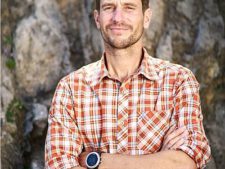 Austrian guide Lukas Furtenbach also heavily markets his so-called “Flash Climbs” advertising that his members can summit Everest in four weeks. He boasts on his Furtenbach Adventures website: “Time is a valuable commodity. We are about to change the fundamentals of high-mountain expeditions. Mount Everest in less than 4 weeks! While a regular Everest expedition can require almost two months, our Everest Flash expedition takes only 4 weeks while increasing safety and chances of success.” See this in-depth sparing interview I did with Lukas late last year.
Austrian guide Lukas Furtenbach also heavily markets his so-called “Flash Climbs” advertising that his members can summit Everest in four weeks. He boasts on his Furtenbach Adventures website: “Time is a valuable commodity. We are about to change the fundamentals of high-mountain expeditions. Mount Everest in less than 4 weeks! While a regular Everest expedition can require almost two months, our Everest Flash expedition takes only 4 weeks while increasing safety and chances of success.” See this in-depth sparing interview I did with Lukas late last year.
Before we get into this, I fully acknowledge that there is a market for luxury and for speed. In two of my ongoing polls, 15% of the voters readers said they would like a fast climb because “Great – I’m busy but want to climb so making it faster, if safe, is good.” As for luxury, it seems that voters want hot showers, heated tents and access to Wifi over movie nights, carpeted tents and foosball tables -:). These guides are meeting a market demand but when is it too much?
[poll id=”14″] [poll id=”27″]
Speed Climbs with Pre-Acclimatization
Both Adrian and Lukas strongly believe in “pre-acclimatization” but the jury for some is still out. A recent article by Steve House and Scott Johnston of the well-respected UpHill Athlete took the entire premise to task with the summary:
“We believe that if you want to climb an 8,000-meter peak, the safest way to do so is to arrive for your expedition in the best aerobic fitness of your life and employ supplemental oxygen. We believe that for 99 percent of climbers, sleeping in a hypoxic tent prior to departure on a high-altitude expedition will return fewer gains than proper training and preparation.”
Lukas told me he is writing a rebuttal and gives them the benefit of the doubt that as Americans, they have not seen the decades of “proof” from European studies. He begins his defense with two points. I’m sure we will see more later.
1) Kilian Jornet is very sure that without his hypoxic acclimatizing program he could not have done what he has done. One of our team members had endless talks with him about this. He completely trusts in the program.
2) They write that in an hypoxico tent it is hot and humid. This is totally wrong. And any person who has slept in such a tent knows that. Dry air is the problem, not humidity. It is absolutely dry in there. In fact it is that dry that you have to bring moisture in it somehow.
But the critics abound about this from the “old school.” In a Bloomberg (a business oriented publication) article about mountain guides and using Alpenglow as a case study, their use “pre-acclimatization” prompted these harsh comments from his competitors:
“Complete bloody hogwash,” says Simon Lowe, managing director of Jagged Globe, the British mountaineering company founded in 1987, and one of rapid-ascent climbing’s most vocal critics. “It’s snake oil.” Russell Brice, the 64-year-old New Zealander who runs Himalaya Expeditions, agrees, flatly discounting the tents’ safety. Guy Cotter, who runs Adventure Consultants, warned that the tents, which mimic the oxygen concentration at altitude instead of the change in air pressure, can interfere with sleep in the final weeks of training, when it’s most important.
Adrian responded the he remains convinced that the tent works based on a trove of evidence that he has gathered on himself. He does his own blood work during training, and he has seen a spike in red blood cells for all 15 expeditions that he’s used Hypoxico. Adrian would probably add that he just, as in on 6 May 2018 summited Cho Oyu at 26,906’/8,186m with three members, two western guides and five Sherpas after only arriving in China eight days earlier.
Of note however is that Adrain himself and his fellow guide Esteban ‘Topo’ Mena are full time professional guides with exceptional strength at altitude. One of the members was also a strong athlete and lives at altitude in Aspen Colorado, Neal Beidleman, who is a former Everest guide and in 2011 skied the Lhotse Face. Another one of the members was Jim Morrison, an accomplished extreme ski athlete. These are not your usual members and House and Johnston argue that sleeping in altitude tents works for those already in great shape like professional mountain guides but may not for the everyday person. To be fair, last year Adrian had one “normal” member, Brooks Entwistle, who summited and sings the praises of the program.
Mike also offers a “speed ascent” that use pre-acclimatization tents before they leave home. He says it cuts two week off his normal $56,00 program but costs $72,000.
The CEO of Hypoxico, Brian Oestrike (and a friend) made this perplexing statement regarding the science of using the in-home altitude tents:
“You have to acclimatize, either at true altitude or in some simulated way, and we help with that,” Oestrike said. “Just because the science isn’t there yet, doesn’t mean it doesn’t work.”
By the way I did a deep look at the use of altitude tents and asked the well respected Dr. Peter Hackett on his views plus interviewed Brian Oestrike. You can read it at this link. To be clear, I have had many climbers who used these tents say their blood chemistry did react and they felt better upon arriving at base camp. So with this battle, either real or marketing in play, let’s move on.
Luxury
I have been writing a lot about the luxuries on both sides this season at Base Camp from a sauna at the Furtenbach camp to double room cabanas at the 7 Summits Club. I asked Mike about this race to luxury and that his camp would be next year would be “bigger and better.” I wanted to know where this luxury race is coming from and is there an end point when it’s simply too much? Is a Vertical Limit style camp in the future? Mike responded in depth:
I am very happy with our base camp this season here at Climbing the Seven Summits, and I hope to keep improving on it in years to come. I think progress is a good thing in life and on Mt. Everest. Progress here has resulted in better infrastructure and safer climbing over the years and this is a trend I staunchly support and plan to lead. I believe that comfortable, happy, healthy, well-nourished climbers at base camp translate in strong and successful climbers up high. That is exactly what we are seeing this season- our climbers have avoided sickness and are climbing stronger than any team I have ever climbed with.
For CTSS though, luxury at base camp is only a small part of overall climber experience, which is the real goal. We want to offer the best climber experience on and off the mountain. This experience includes personalized attention, climb customization, a smaller team, comfort, good food, access to your guides and Sherpa, and camaraderie. For us a climb of Mt. Everest is too important to be a “one-size-fits-all” or even a “two-sizes-fits-all” approach. We feel that each climb and climber is unique and should have their climb customized to them. I layout options but encourage my members to tell me what they need and work hard to make that happen for them.
Mike then draws a line in the snow the “old school” operators might want to take notice of:
I, and others in the community, think Everest service has been somewhat stagnant for the last generation. I am lucky that as a new company I am unconstrained by the status quo and decades of doing things a certain way. We’re trying to look at Everest service objectively from the outside. Of course a huge part of this are my local partners Tendi and Sagar, and like me they are young, hungry, and want to differentiate ourselves by offering new and novel approaches that provide better service to the customer.
Our goal is to keep improving base camp comfort and maximize customization and personal service so that climbers can find the right climb and price point for them. Many of my members are close friends so I’m very passionate about this. I will roll out a variety of new options for Everest climbers on my website over the next week that I think will showcase this, beyond what we’re doing here at base camp.
When I asked Adrian about this trend he was succinct:
I am so excited to see local companies offer quality trips with standards of safety and environmental ethics. I see plenty of room in the market for a variety of companies and styles. Does everyone need a pool table at Base Camp, or unlimited WiFi, or luxury lodging before and after the expedition, or the dialed logistics that allow for 35-day climbs of the mountain? Absolutely not. But should everyone have to maintain certain standards of safety, certification, and rescue protocols? I think so.
When I asked Adrian about Seven Summits Treks, $130,000 VVIP Everest trip with a long list of amenities that sounds more like a cruise ship than a mountain climb, he is less diplomatic but firm in his view on his $80,000 trips:
Haha, the VVIP, hilarious. We’ll stick with our pricing and product. I’m much more focused on experienced AMGA/IFMGA western guides and experienced KCC-trained Sherpa, paid top wages, than I am on the gimmicks. Our staff quality, and our low ratios and small teams, make us more expensive than the average, but I know it makes for the best possible climb of Everest for our member :).
However, when Adrian gets wound up, he tells me about his base camp on Everest this year “And it’s going to be fun :). Stay tuned for updates from BC – while each team will have fully independent BC facilities, Sherpa teams, and mountain camps, there will also be some fun communal spaces (think bar/coffee shop/bakery).” Seems the lure of luxury is strong.
I asked Lukas Furtenbach about his luxuries in our recent interview:
AA: The support you provide is extraordinary: 1.5 Sherpas per member, unlimited oxygen, generous member to western guide ratio, “luxurious” base camp with gourmet food. And if they don’t make it on their first try, you let them try again after a short rest! Come on Lukas, is this mountain climbing or a cruise for people with breathing problems?
LF: Our members pay a lot of money and use a lot of their time to make their dream come true. Whatever we can do to increase their safety, their chances of success and the value of their once in a lifetime experience we will do. No matter what it costs and no matter what others are thinking about it. We are in debt to our customers, not to Reinhold Messner. When people climb Mount Everest with us and think afterwards that it felt like vacation for people with breathing problems, we have done our job right.
While my premise was that this new generation was going overboard, I thought back to my interview with Russell Brice (Adrian’s old boss) in 2011 and what everyone thought then was an over the top base camp. Brice told me upon this characterzation that his members are not looking for a bargain. They are looking for a positive experience with a solid chance to safely summit Mt. Everest. He spoke of his Sherpas, cooks, porters and staff that had been with him for years and what they meant to him. That they deserved to be treated with as much respect as any member.
He went on to provide his overriding philosophy: if you expect it at home, it should be available at base camp. If you have a glass of wine with dinner, why not at base camp? If you sleep warm at home, why not on Everest? “But, this is not home!” I countered. Climbing a mountain is not supposed to be comfortable. You are not supposed to be coddled, pampered, and have luxuries. You need to suffer, to want, to yearn for creature comforts – oh and summit of course! We laughed. Brice began to talk of the early British expeditions where literally thousands of porters would travel for hundreds of miles carrying the finest Irish scotch whisky, the food available from India and back home. They had the finest in wool clothing, the leather boots. Table and chairs were assumed – not a luxury. They traveled in style almost 100 years ago so why not today? He concluded with if you want to suffer, there are many companies that will help you!
Touché
Qualified Guides
And that takes us to the real issue of safety, and experience of the members of guides. Adrian puts it right out there when I bring up that there are now 58 IFMGA certified Sherpas working for various companies. They have gone through 146 days of training on everything alpine from rock to snow to medical and member “management.” Adrian often promotes that Alpenglow “All of our international expeditions and climbs are led by AMGA and/or IFMGA certified guides.” Of note, some of his guides are part way through the certification but a check of his website is impressive with their qualifications.
Yes! This is incredibly important. I believe there is so much confusion and misinformation amongst climbers and the mainstream about the difference between a Mountain Guide and a High Altitude Worker. They are two different jobs on mountains like Everest and I believe the confusion is a significant cause of the problems on the mountain.
In my opinion HAW’s should never be called guides. It confuses people. HAW’s are essential to success on the mountain and their effort and talent should never be discounted. They fix lines, set camps, break trail, carry loads, etc. But in general, neither their formal training nor their experience sets them up for success making hard decisions for members in dangerous terrain and conditions.
That is the job of an AMGA/IFMGA mountain guide (Nepali or Tibetan or foreign). Mountain Guides have undergone years of training, standardized examinations (across 30 countries), and have gained years of experience in varied terrain and conditions, specifically focused on decision-making for the safety of their members and coworkers.
This is not to say one title is better than the other. They are just two different jobs with two different sets of skills and requirements. I believe in most situations a mountain guide would fare no better at the job of High Altitude Worker than vice versa.
By the way, look at the Furtenbach’s guide page. It shows all of their guides are UIAGM / IFMGA certified mountain guides as does Mike’s Climbing the Seven Summits.
Sherpa Training at the KCC
I was recently contacted by Conrad Anker with an update on the Khumbu Climbing Center. Conrad say the new training facility is on track to open in June, 2019. He says now over 1,000 Sherpas have gone through the formal training program. Conrad also mentioned that Alpenglow hires exclusively KCC graduates. He also mentioned that Alpenglow’s sirdar, Panaru from Phortse, donated half the land for the building.
Industry Influence
Adrian talks about Alpenglow working with Kari Kobler and Hiro, a leading Japanese guide. He feels that this combo will provide improved logistics service, increased consistency, and maintain a higher standard of ethics. In his normal humble style 🙂 , Adrian opines: “So now, in my heavily biased opinion :-), the leading European, Japanese and American companies are teamed up to set and maintain a much-needed standard. Hopefully our joint example will encourage (or force) others to maintain standards of worker wages, member/guide/HAW experience levels, required medical/rescue/communication equipment and protocols, systems for trash and human waste, etc.”
Now, that’s a big statement so I asked him how he was going to accomplish influencing other guides when they are natural competitors and everyone feels their service is best in the world of high-altitude guiding. Adrian acknowledges the challenge and suggest an interesting strategy:
This is the big question. Ultimately I hope governments will take on effectively managing Everest in similar ways that we see government manage Denali, and now more and more effectively mountains like Aconcagua and Kilimanjaro. Managing companies is key. So is placing climbing rangers not only in Base Camp, but also on the route and in upper camps. These climbing rangers need experience, respect, and the ability to enforce rules.
Until that happens, we need to do a better job of educating members on what they should require of their logistics companies and/or guiding companies. That’s one way I think a collaboration of companies like mine and Kobler can help. We set high standards, and we can and should talk about them. We need to not only show the difference between ethical guiding and the opposite to our current members on the mountain; we also need to speak to the broader audience.
I wonder if public shaming may have a place in this process. Currently there seems to be a tradition (which I also have been a part of) to not call out the companies that are not meeting simple standards. If governments won’t call out bad actors, we should. We all know of companies not operating ethically.
He continues with “We need to educate members and the mainstream on basic standards of safety and ethics, and then shame those that refuse to meet that standard. At the same time we need to lobby China and Nepal to set, require and enforce standards.”
When presented with the facts about the improved skills of the Sherpa community throughout Khumbu Climbing Center, the Himalayan Medics Rescue Service who has trained several hundred Sherpas on WFR the past few months, Adrian gets in front of the parade “This is great progress! I believe Alpenglow was one of the first guide companies to pay for a number of our lead Sherpa to go through WFA training almost a decade ago. It is excellent to see this grow … training for HAW’s is high quality and important. Alpenglow donates $200 to the KCC for every member on a Himalayan expedition ($1800 this spring) and all of our HAW’s are KCC trained. ”
Back to Hammil, he has partnered with Tendi Sherpa of TAGNepal. Mike said that when he decided to launch CTSS, Tendi Sherpa was the first person I wanted to partner with. He’s been a long time friend and someone I’ve always admired and respected, not only as one of the world’s strongest guides with 12 Everest summits and international certifications but as a savvy business owner, entrepreneur and philanthropist. Tendi embodies the characteristics we admire in the Sherpa. He’s humble, kind, hard working, driven and sincere.”
Lukas chimes in about the cost of a quality expedition and certified guides:
The biggest cost factors on Everest are oxygen, transport of oxygen up and down the mountain, experienced sherpas and IFMGA certified guides. The amount of oxygen and sherpas we provide justifies the price. That’s a simple arithmetical problem. Everest Flash is not a cash cow nor nonsense or a trick. We simply do everything we can to make an Everest expedition shorter. We try to take a shortcut to the summit. That costs money. It takes a lot of knowledge and experience, is a lot of work and pretty much responsibility.
The Future
These three guides are walking their talk. They are running quality climbs, albeit at top prices, have a solid track record. As I opened, the market is there and similar to any market, someone will meet consumer demands, regardless of how it looks to others. And as long as there are people willing to pay a premium for luxuries, time and the reassurance that they are in good hands, a company will create a matching product. I wish all three the best of luck for a safe season on Everest as we approach summit time.
Climb On!
Alan
Memories are Everything
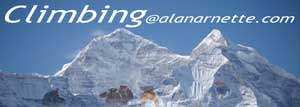
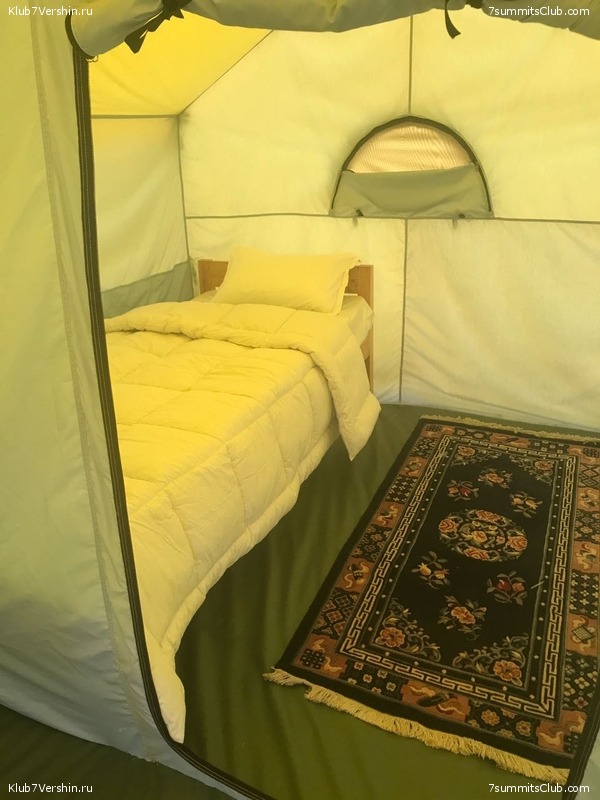
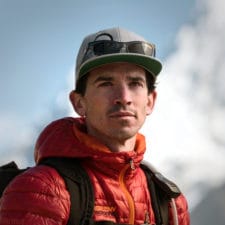
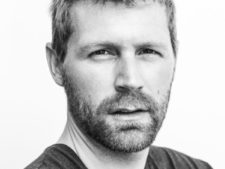

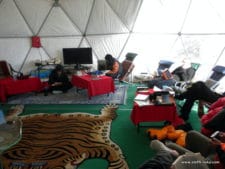

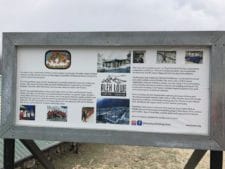
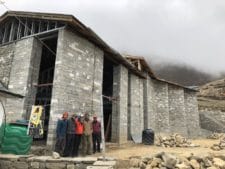
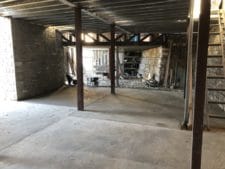


9 thoughts on “Everest 2018: The New Generation of Everest Guides Making Their Mark”
With the upscale base camps some of the operators are offering, does this appeal to climbers with no business trying to scale Everest thinking this luxurious camp will help them climb Everest?
I don’t think there is a correlation. In my experience and observations of Everest climbers, the more money you have the more you want to stay alive thus you spend a higher amount assuming that will keep you safer by going with proven guides who have more experience, more backup, access to better weather forecast, and more. Assuming “rich” people don’t have the same skills as less-wealthy ones, is a broad mischaracterization imho.
Hi Alan,
If the speed climbs only take half the time of a normal Everest climb how are they more expensive?
Also, people talk about there being ‘x’% less oxygen at certain altitudes. But my understanding is that there is still 21% oxygen in the air, regardless of altitude, but the drop in air pressure means that we cannot use it all?
Thanks – really enjoying your coverage as always.
Wayne
Thanks Wayne, the is what I wrote years ago about oxygen and unless physics has changed -:) it still valid”
The air we breath has a mixture of gases including oxygen and nitrogen. The atmosphere contains about 21% oxygen at all altitudes. What changes as we go higher is the air pressure. Gravity pulls on gas molecules in the air. The closer to the Earth’s surface, the more pressure. At the summit of Everest, the pressure was measured in 1981 by a Nova team at 253 mmHG. At sea level it is 760 mmHG. The reason for the lower pressure is that there is less atmosphere pushing down from above. This reduced pressure allows the air molecules to scatter. This means that on Everest the air is not as dense or “thick”. In other words there is the same amount of oxygen but the molecules are scattered thus the term “thin air”. So in each breath there is less oxygen. To be precise about 66% less!
And for the price question, counterintuitively, the shorter the trip, the more support required. Most operators provide more oxygen, have a higher ratio of western guides and supply the altitude tent for their members use before they arrive, so there are real costs involved associated with the higher level of support … then there is the simple market forces. Similar to flying first class in an airplane vs the last row – a small amount of real costs involved but mostly you charge what people are willing to pay.
Climbing Everest isn’t supposed to be a vacation to the Bahamas. Some of the luxury items being provided are downright embarrassing. The hardships previous climbers endured contributed to their achievement, reaching the top in spite of the grueling conditions. I don’t suppose climbing Everest will ever be easy, but some of these new conveniences are overboard. Carpeted tents? Foreign chefs? Movie night? Gimme a break…..Keep it macho, it’s more interesting that way.
“Keep it macho” – you made my day!
I´ve been to the north side of Everest in 2017 (but only made it to around 6000m, because of health issues). Anyway, I saw quite a lot of imho unnecessary “creature comforts”. I don´t go into the mountains to feel “home away from home” and I don´t feel the urge to tell the outside world what I have done that day. There´s time for that when I´m back.
In 2005 I climbed Cho Oyu (without mask). There were no beds in Base camp, no movie nights and internet was 1USD per Kilobyte… No Furtenbachs, no Ballingers, but people from all over the world with lots of mountain experience (and stories) beside the seven summits. And when I stood on the Pang La in April 2017 and none of the other members in my group was able to recognize any other mountain than Everest, when I had to listen to Vin Diesel from inside my tent on one of these film nights in base camp – I strongly missed the old days…
Sadly, for me, climbing Everest is slowly becoming a vanity fair for the super-rich. It is full of people who do not share the ideals of mountaineering, people without preparation, who never climbed a 7000, let alone an 8000. It’s a playground for eccentrics collect trophies at all cost, tomorrow we will have guides carrying them to the summit, with all unfair means.
I strongly desagree with Ballinger. The North Side is more technical, harder and even the death rate is higher when compared to the South Side.
John, Seven Summits Treks has 100 members on the South side this year with most of them paying about $30K. We are seeing a natural segmentation of the market in to low, medium and high end services, just like on airplanes. Does this make Everest less “adventurous”? I say no, but everyone has a strong opinion on that question.
For reference to 7ST 100 members, Alpenglow has 6, CTSS has 7 and Furtenbach has 6.
John, not to put too much on this but take a look at my post on the death rates, you may be surprised when you look at only the “normal” route death rates:
“As this chart shows, the standard routes account for 73% of the deaths with the Southeast Ridge dominating all deaths at 137 or 48%. This number is heavily driven by the 2014 ice serac release off the West Shoulder of Everest onto the Khumbu Icefall taking 17 lives and when 14 people were killed at Basecamp in 2015 after 7.8 magnitude earthquake caused an avalanche off the Pumori-Lintgren ridgeline.”
The full post is at http://www.alanarnette.com/blog/2017/12/17/everest-by-the-numbers-2018-edition/
Comments are closed.